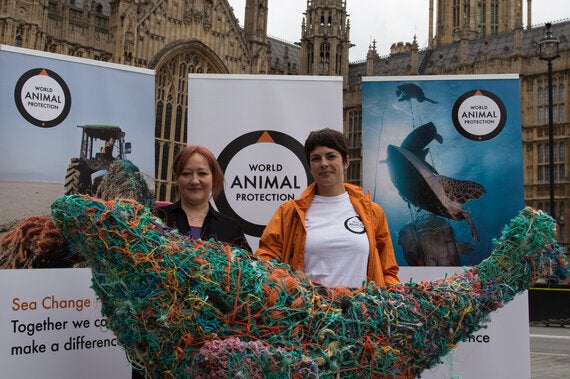
My constituency office in Bristol looks out over a lovely park, with many mature trees and a lake populated by ducks, geese, swans and other waterfowl, as well as plenty of fish. It's a tranquil scene, but the Friends of St George's Park have been campaigning for a long time on the problem of discarded fishing gear. Birds can become tangled up in fishing lines, or they swallow other fishing-related debris, causing them great distress, injury, and in some cases a painful death after hours of suffering.
This is just one small example of what has become a large-scale problem. A staggering 640,000 tonnes of ghost fishing gear - so-called because the gear 'continues to fish' after it is discarded - is left in our oceans each year. It is one of the biggest threats to marine animals and wildlife. More than 8000 marine animals, including whales, dolphins, porpoises, seals, seabirds and turtles live and breed around the coasts of the British Isles. They can suffer slow and agonising deaths when they get trapped in ghost nets and other types of fishing litter. Minke whales in Scottish waters have been reported entangled in fishing gear and Cornwall Seals Groups has reported that net entanglement is a major issue for live seals, as their curiosity leads them to play with storm damaged and discarded fishing net floating in the water.
The problem is partly the result of increased fishing activity, as well as technological advances, with mass production of non-biodegradable fishing gear, made primarily from plastics, starting after the Second World War. Items from that time are still being retrieved from the oceans today: not surprising when some items are expected to last in our seas for up to 600 years.
Some of this gear is very buoyant, meaning that it does not sink to the bottom but instead floats at the surface or is carried along by currents, making it far more likely that marine animals will accidentally consume it. Some of the plastic fishing line is almost invisible in water, and very tough, making it very difficult for animals to break free if they are caught up in it. It can also cut deeply through their flesh, and even bone, if an animal becomes entangled. Eventually these plastics break down, very slowly, to become the size of grains of sand; these 'microplastics' may have a toxic effect on the food chain that scientists are only beginning to understand.
This is why I am supporting World Animal Protection's campaign, which was last week launched during Sea Change Week to prevent ghost fishing litter from entering UK waters, and to protecting thousands of British species currently affected.
The campaign is calling upon local beach users, coastal walkers, divers and ocean lovers to take photos of ghost fishing gear they find littering the coastline. This evidence will be presented to Government and seafood companies to show the environmental impact, and then to push for further action. This will include hands-on animal rescue; the removal of ghost gear from UK waters and the UK coastline; developing initiatives to use recovered ghost gear for sustainable recycling projects; and working with the companies, organisations and individuals who can stop fishing gear entering our seas. We may not be able to stop ghost fishing altogether, but we can do a lot more to help clean up our seas. I hope the UK Government will listen.
